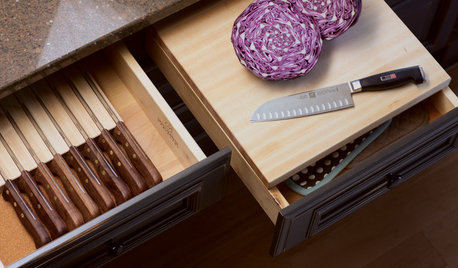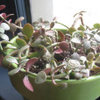new to lithops need advice please!
ilovecacti_grower
13 years ago
Related Stories

TASTEMAKERSBook to Know: Design Advice in Greg Natale’s ‘The Tailored Interior’
The interior designer shares the 9 steps he uses to create cohesive, pleasing rooms
Full Story
Straight-Up Advice for Corner Spaces
Neglected corners in the home waste valuable space. Here's how to put those overlooked spots to good use
Full Story
DECORATING GUIDES10 Design Tips Learned From the Worst Advice Ever
If these Houzzers’ tales don’t bolster the courage of your design convictions, nothing will
Full Story
LIFEGet the Family to Pitch In: A Mom’s Advice on Chores
Foster teamwork and a sense of ownership about housekeeping to lighten your load and even boost togetherness
Full Story
KITCHEN DESIGNSmart Investments in Kitchen Cabinetry — a Realtor's Advice
Get expert info on what cabinet features are worth the money, for both you and potential buyers of your home
Full Story
REMODELING GUIDESContractor Tips: Advice for Laundry Room Design
Thinking ahead when installing or moving a washer and dryer can prevent frustration and damage down the road
Full Story
KITCHEN STORAGEKnife Shopping and Storage: Advice From a Kitchen Pro
Get your kitchen holiday ready by choosing the right knives and storing them safely and efficiently
Full Story
HEALTHY HOMEHow to Childproof Your Home: Expert Advice
Safety strategies, Part 1: Get the lowdown from the pros on which areas of the home need locks, lids, gates and more
Full Story
BATHROOM DESIGNDreaming of a Spa Tub at Home? Read This Pro Advice First
Before you float away on visions of jets and bubbles and the steamiest water around, consider these very real spa tub issues
Full Story
THE ART OF ARCHITECTURESound Advice for Designing a Home Music Studio
How to unleash your inner guitar hero without antagonizing the neighbors
Full Story








ilovecacti_growerOriginal Author
newnewnie
Related Professionals
Burlington Landscape Contractors · Doctor Phillips Landscape Contractors · Eagle Landscape Contractors · Firestone Landscape Contractors · National City Landscape Contractors · Paramount Landscape Contractors · Thornton Landscape Contractors · Maplewood Landscape Contractors · Fitchburg General Contractors · Parma General Contractors · Tabernacle General Contractors · Conyers Carpenters · Tucson Carpenters · Glasgow Decks, Patios & Outdoor Enclosures · Parker Decks, Patios & Outdoor Enclosuresxerophyte NYC
User
houseplantlover86
houseplantlover86
citosa
houseplantlover86
xerophyte NYC
Coralred
brodyjames_gw
xerophyte NYC
houseplantlover86